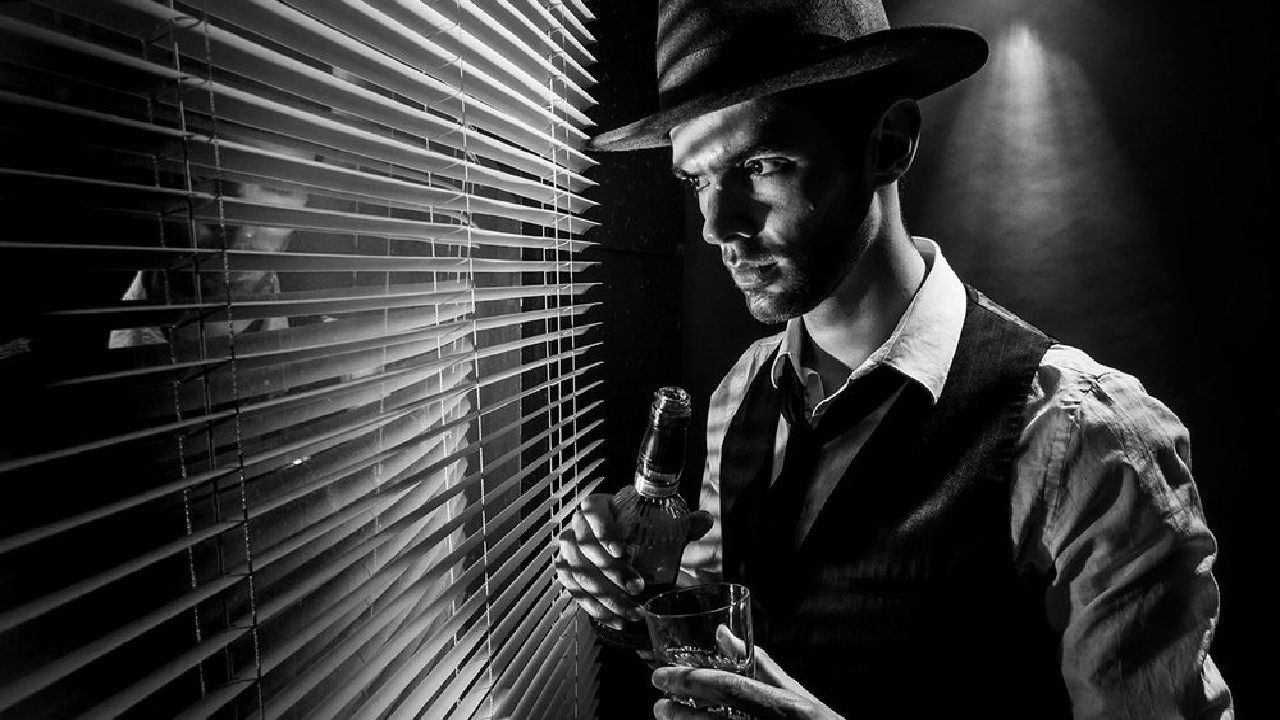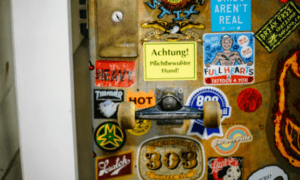In the world of cinema, few styles are as instantly recognisable and deeply influential as film noir. With its stark shadows, moral ambiguity, and psychological complexity, this distinctively American cinematic movement continues to fascinate film enthusiasts more than seven decades after its emergence. For those curious about the essential noir viewing guide, classic femme fatales, or noir’s influence on modern cinema, understanding this style is essential—it represents not just a collection of films, but a visual language and thematic approach that shaped the entire course of filmmaking.
Origins in Shadow and Light
The term “film noir” (literally “black film”) was coined by French critics who noticed a distinctive trend in American crime dramas produced during and after World War II. These films presented a visually striking, morally complex world that differed dramatically from the optimistic Hollywood fare of previous decades.
The visual aesthetic of film noir drew heavily from German Expressionism, an artistic movement that had flourished in European cinema during the 1920s. As directors fled Nazi Germany for Hollywood, they brought with them a dramatically shadowed lighting style and psychologically expressive visual composition.
This distinctive visual approach wasn’t merely stylistic—it reflected deeper psychological and societal anxieties. Post-war America was experiencing significant social upheaval, with returning soldiers facing a changed nation. The noir style, with its emphasis on alienation, cynicism, and moral corruption, provided a perfect vehicle for exploring these tensions.
Defining Elements of the Noir Universe
What makes a film noir? While there’s ongoing debate about whether noir is a genre or a style, several key characteristics define these atmospheric classics:
High-Contrast Visuals and Low-Key Lighting
Film noir utilises high-contrast, chiaroscuro lighting—involving hard lights and deep shadows—creating a visually striking aesthetic that distinguishes it from other black and white films of the era. This technique wasn’t just visually appealing; it served the thematic purpose of emphasising the moral dualities and psychological complexity of the stories.
Cinematographers like John F. Seitz (Double Indemnity), Karl Freund (Key Largo), and Sid Hickox (The Big Sleep) helped define this iconic look, creating rain-soaked streets, shimmering street lamps, and endless streams of cigarette smoke wafting through shadow-filled rooms.
Morally Complex Characters
The protagonist of a noir film is typically a flawed and cynical character—often a detective or ordinary man caught in extraordinary circumstances. Rather than clear-cut heroes, they’re morally ambiguous figures navigating a corrupt world.
Perhaps most iconic is the femme fatale—a dangerous, seductive woman who often leads the male protagonist toward danger or destruction. These complex female characters represented a significant departure from traditional Hollywood archetypes, reflecting changing gender dynamics in post-war America.
Narrative Complexity and Subjectivity
Film noir is known for its frequent use of narration and flashbacks, creating a subjective, often unreliable perspective. An omniscient, metaphor-spouting narrator (frequently the central character) might clarify a characteristically labyrinthine noir plot or offer a jaded viewpoint.
This subjective approach, combined with complex, twist-filled narratives, creates the distinctive psychological unease that permeates the noir experience. Nothing is ever quite as it seems, and the audience is constantly required to question appearances.
Essential Film Noir Classics
For anyone looking to explore this cinematic style, several essential films stand as definitive examples:
The Maltese Falcon (1941)
John Huston’s adaptation of Dashiell Hammett’s detective novel is widely considered one of the first major film noirs. Starring Humphrey Bogart as private detective Sam Spade, it established many of the conventions that would define the movement, from its morally complex protagonist to its shadowy visual style.
Double Indemnity (1944)
In Billy Wilder’s noir classic, insurance salesman Walter Neff (Fred MacMurray) gets entangled in a murderous scheme when he falls for the seductive Phyllis Dietrichson (Barbara Stanwyck). With a screenplay co-written by Raymond Chandler and cinematography that defined the noir look, it remains one of the most influential examples of the style.
Laura (1944)
Otto Preminger’s elegant mystery centres on a detective who falls in love with the portrait of a woman believed to be murdered. With its sophisticated psychological underpinnings and stylish visuals, Laura demonstrates how noir could combine crime elements with complex romantic themes.
Touch of Evil (1958)
Orson Welles’s baroque masterpiece is often cited as the last great film of the classic noir period. Its famous opening tracking shot and expressionistic visual style pushed noir aesthetics to their limits, creating an unforgettable portrait of corruption along the U.S.-Mexico border.
The Legacy of Noir
While the classic period of film noir is generally considered to have ended by the late 1950s, its influence has remained powerful throughout cinema history. Neo-noir films like Chinatown (1974), Blade Runner (1982), and L.A. Confidential (1997) have adapted noir themes and visual strategies for new eras, demonstrating the enduring appeal of the style.
“The lasting impact of film noir stems from its unique ability to blend artistic vision with honest psychological exploration,” says Ciaran Connolly, Founder at Best Movies. “These films continue to resonate with modern audiences because they address timeless questions about moral compromise, human desire, and the darkness that can lurk beneath seemingly ordinary facades. What makes noir particularly fascinating is how it transformed technical limitations of the era into artistic strengths, creating a visual language that remains powerful even in today’s high-definition world.”
From television to graphic novels, video games to fashion photography, the noir aesthetic continues to permeate popular culture. Its distinctive visual language and thematic concerns have become part of our collective artistic vocabulary, informing how we think about crime, psychology, and moral ambiguity.
Appreciating Film Noir Today
For today’s film enthusiasts, noir offers a rich vein of cinematic history to explore. Beyond the acknowledged classics, dozens of lesser-known noir gems await discovery, from tightly budgeted B-movies to international variations on the style.
The best approach is to start with the acknowledged masterpieces and then branch out. Pay attention to the visual techniques—the play of light and shadow, the expressive camera angles—as well as the psychological complexity of the characters and stories. Noir is as much about atmosphere and mood as it is about plot, and understanding its visual language enhances appreciation of the films.
Film noir also offers fascinating insights into mid-20th century American society, reflecting anxieties about urban life, changing gender roles, and post-war disillusionment. Viewed in this context, these films become not just entertaining crime dramas but valuable historical documents.
As cinema continues to evolve, the influence of noir remains profound. Whether in explicit homages or subtle visual references, contemporary filmmakers continue to draw on this rich tradition. For anyone serious about understanding film history, noir represents an essential chapter—a moment when commercial Hollywood cinema achieved a level of artistic expression and psychological depth that continues to set standards for filmmaking today.
The team at Best Movies is committed to helping film enthusiasts explore the rich heritage of cinema, from the shadowy world of film noir to the vast diversity of global filmmaking. Visit our comprehensive guides to discover more about this fascinating cinematic style and the directors, actors, and technicians who brought it to life.
Beyond the Shadows: Film Noir’s Contemporary Relevance
Why does film noir continue to captivate viewers in the 21st century? Perhaps because its themes of corruption, moral ambiguity, and psychological complexity feel increasingly relevant in our complex modern world. Contemporary filmmakers continue to draw on noir techniques, adapting them for colour cinema and digital filmmaking while maintaining the essential tensions that made the original films so powerful.
For modern viewers experiencing classic noir for the first time, these films offer a masterclass in economical storytelling and visual communication. Modern blockbusters could learn much from noir’s ability to create atmosphere and tension through lighting, composition, and performance rather than expensive special effects.
As streaming platforms make classic cinema more accessible than ever, a new generation is discovering the shadowy pleasures of film noir. These films may be in black and white, but their moral landscapes are painted in infinite shades of grey—making them perfect viewing for audiences tired of simplistic heroes and villains.
Whether you’re a seasoned cinephile or a newcomer to classic cinema, the world of film noir offers rich rewards. By understanding this influential style, viewers gain not just appreciation for an important chapter in film history but also insight into the visual techniques and storytelling approaches that continue to shape cinema today. BestMoviesNewMovies.com remains dedicated to illuminating these classic treasures, ensuring new generations can experience the timeless thrill of stepping into film noir’s shadowy world.





























